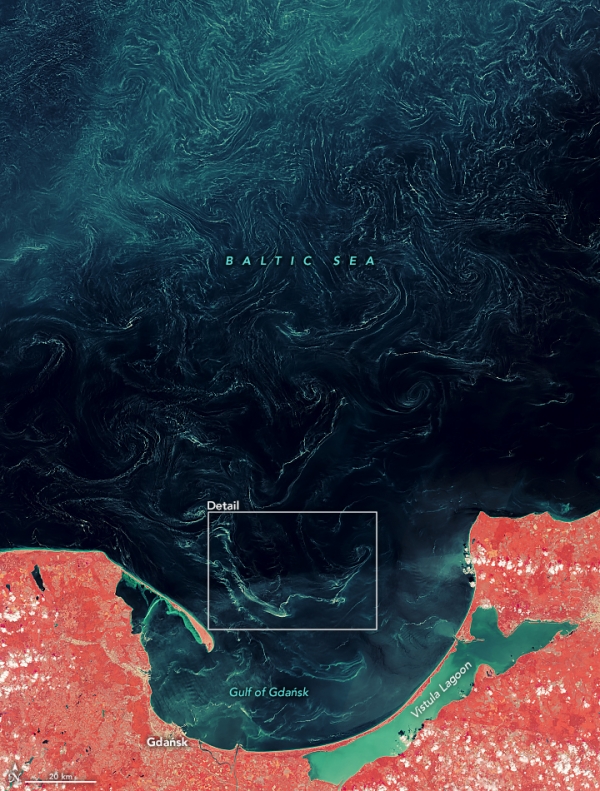Seasonal allergy sufferers be warned: this story may have you reaching for the antihistamines. Researchers have determined that “slicks” on the surface of the Baltic Sea, visible in satellite images, are made up of pine pollen.
Pollen slicks are visible in these images of the Baltic Sea, acquired on May 16, 2018, with the MultiSpectral Instrument (MSI) on the European Space Agency’s Sentinel-2A satellite. The images are false-color (bands 8A, 3, and 2) and have been enhanced to increase the visibility of the pollen. The patterns are caused by wind-driven currents and waves moving the pollen around on the surface of the water.
The composition of slicks in this region was previously unclear. Other types of floating material, such as cyanobacteria and marine debris, have been known to appear in satellite imagery. But by combining experimental results, ground-based observations, and satellite image processing, the researchers could confidently attribute the material in the eddies to pine (Pinus sylvestris) pollen.
Read more at: NASA Earth Observatory
Photo Credit: Lauren Dauphin


